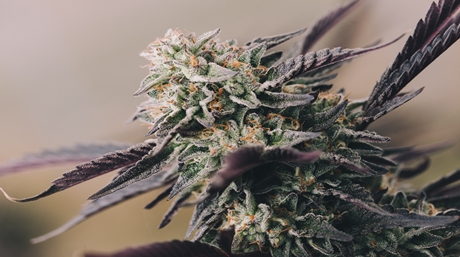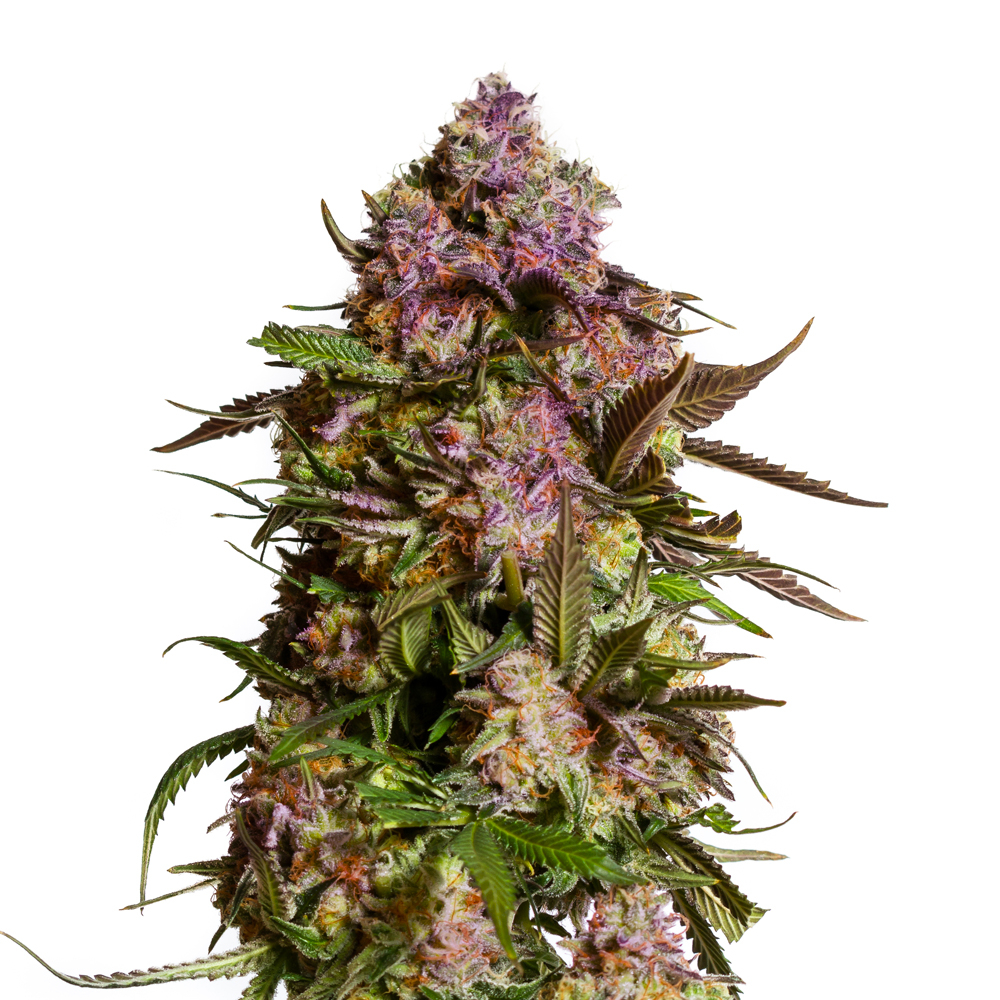Undeniably, purple buds are awesome. Purple cannabis strains have an exotic appearance and often bear cool names like Blue Dream XTRM or Purple Power XTRM. But does their deep purple pigment indicate potency or alter the taste compared to regular green weed? Read on to discover the answers.
Purple or Another Shade of Color
Firstly, let’s explain why certain marijuana strains turn purple or display other colors. The reason lies in their genetic ability to produce anthocyanins. Anthocyanins are a family of flavonoids that generate pigments such as blue, purple, or red. Various fruits and vegetables like eggplants, blueberries, purple grapes, and red cabbage naturally contain anthocyanins. Some marijuana strains possess higher levels of anthocyanins due to their genetic makeup. Since anthocyanins are potent pigment compounds, only a small amount of these flavonoids is required for the plant to exhibit bold colors.

Anthocyanins are found in the vacuoles of cells within the plant’s leaves, flowers, and fruits. These flavonoids can also migrate to the marijuana trichome stalk and even reside inside the trichome head, creating an intriguing visual effect. The presence of anthocyanins in the trichomes adds to the overall appeal of purple cannabis strains.
It is important to note that the color of cannabis plants is not solely limited to purple. Some strains may exhibit shades of blue or red. The final coloration depends on several factors, including genetic predisposition, environmental conditions, and the pH level.
The Role of Genetics and Pigments
The genetic makeup of a marijuana strain plays a significant role in determining the presence and concentration of anthocyanins. Some strains are bred specifically to enhance the expression of these pigments, resulting in vibrant purple hues.
Flavonoids, including anthocyanins, serve multiple purposes in plants. They act as natural sunscreens, protecting photosynthetic tissues from excessive light and UV radiation. In cannabis, anthocyanins help shield the leaves from high light intensities, reducing stress on the plant. These pigments also contribute to antioxidant properties, offering additional protection against environmental stressors.
The production of anthocyanins is influenced by various environmental factors, such as temperature, light exposure, and nutrient availability. Cooler temperatures, particularly during the late stages of flowering, can stimulate anthocyanin production and intensify the coloration of cannabis plants.
The pH level of the plant’s environment also plays a crucial role in determining the color. Anthocyanins respond to changes in pH, exhibiting different shades depending on whether the environment is acidic, neutral, or alkaline. In an acidic environment, the plant tends to display red or pink colors. Neutral environments result in purple hues, while higher pH levels lead to blue shades. Yellow colorization occurs in alkaline environments. Anthocyanin pigments thrive best in an acidic environment, which is why many purple cannabis strains exhibit their vibrant colors under slightly acidic conditions.
Taste and Aroma of Purple Weed
Contrary to popular belief, the taste and aroma of purple weed are primarily determined by the strain rather than the color. While some people expect purple weed to have a grape-like flavor, the reality is that the flavor profile varies greatly among different strains.
Each strain possesses its own, unique combination of terpenes, aromatic compounds that contribute to the taste and smell of cannabis. The terpene profile of a strain plays a significant role in determining its flavor characteristics. For example, some purple strains may have fruity or berry-like flavors, while others might exhibit earthy or spicy undertones.
It’s important to note that the taste and aroma of cannabis are subjective experiences that can vary from person to person. What one individual finds appealing, another may not enjoy as much. Therefore, it’s recommended to explore different strains and experiment to find the flavors that suit your palate.
Perception and Potency of Purple Weed
Purple cannabis strains have gained a reputation for being potent and highly desirable among consumers. However, it’s essential to clarify that the color of the bud itself does not directly correlate with its potency. The level of tetrahydrocannabinol (THC), the primary psychoactive compound in cannabis, is not inherently influenced by the color of the buds.
The potency of a cannabis strain depends on various factors, including specific genetics, cultivation techniques, harvesting, and curing processes. While some purple strains may indeed be potent, it’s crucial to evaluate the overall cannabinoid and terpene profile of the strain to determine its effects and potency accurately.
Additionally, factors such as trichome density, resin production, and overall cannabinoid content contribute to the potency and quality of the cannabis. These characteristics can vary among different strains, regardless of their color.
Rarity and Market Value of Purple Marijuana
Purple cannabis strains tend to be rarer compared to their green counterparts. The distinctive coloration and unique visual appeal make them sought after by cannabis enthusiasts and collectors. As a result, the market value of purple buds may be higher due to their relative scarcity and aesthetic appeal.
Furthermore, the cultivation process for purple strains can be more challenging and time-consuming. Growers often need to carefully manage environmental conditions, including temperature, light exposure, and nutrient availability, to encourage the expression of anthocyanins. These additional efforts contribute to the higher cost of producing purple cannabis strains, which may be reflected in their price.
The Influence of Environmental Factors
Environmental factors play a significant role in determining the color expression of cannabis plants. Apart from genetics, the following factors can influence the coloration of the buds:
Temperature:
Temperature fluctuations can impact the coloration of cannabis plants. A drop in temperature during the flowering phase can stimulate anthocyanin production and intensify the purple, blue, or red hues. Conversely, higher temperatures may reduce the expression of anthocyanins, resulting in less vibrant colors.
Light Exposure:
The intensity and duration of light exposure can influence color development in cannabis plants. Certain strains may require specific light conditions to maximize the expression of anthocyanins. Adequate exposure to ultraviolet (UV) light during specific stages of growth can enhance the coloration of the buds.
Nutrient Availability:
The availability and balance of essential nutrients can affect the overall health and coloration of cannabis plants. Deficiencies or excesses in certain nutrients can lead to color variations and impact the intensity of pigmentation. Providing optimal nutrient levels, particularly micronutrients, can help promote vibrant color development.
Appreciating the Beauty of Purple Cannabis
Whether you’re a cannabis enthusiast or a casual consumer, purple buds offer a visually striking and captivating experience. The rich hues and vibrant colors add a touch of uniqueness to the cannabis landscape.
It’s worth noting that while the color of the buds may not directly affect their potency or taste, the visual appeal and novelty factor associated with purple strains can enhance the overall enjoyment of the cannabis experience. From aesthetic pleasure to the diverse range of flavors and aromas, exploring different purple strains allows for a deeper appreciation of the plant’s intricacies.















